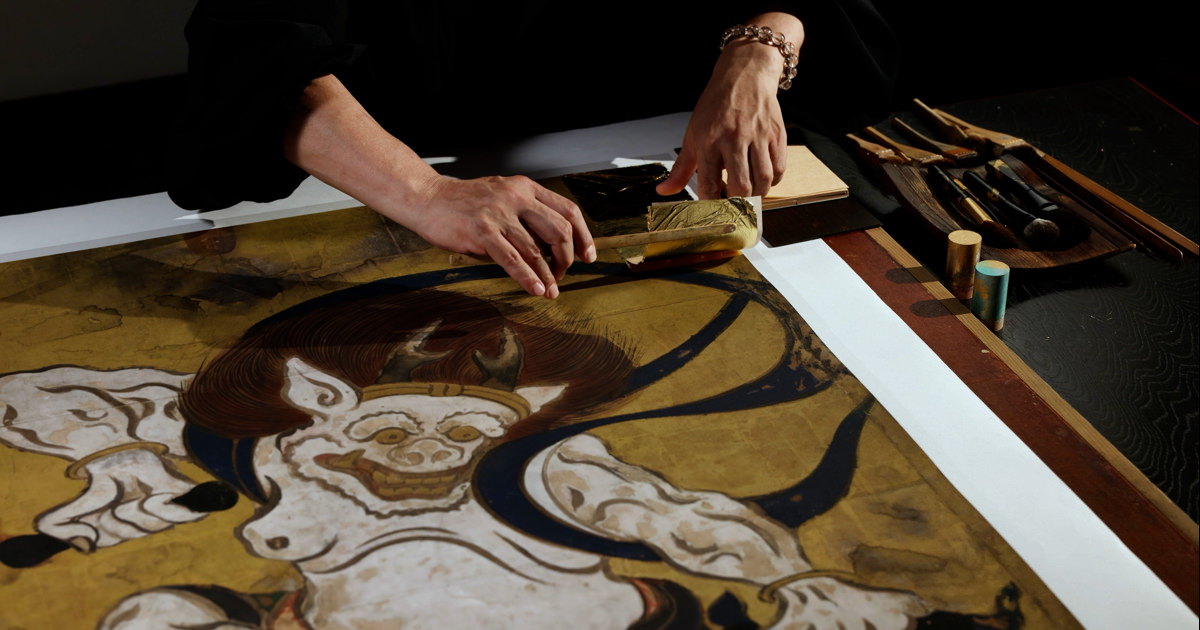Above: These images are based on the high resolution facsimile produced by the Tsuzuri Project. Unauthorized copying, duplication, or transfer of these images is strictly prohibited.
Below: These images were photographed through the Tsuzuri Project. Unauthorized copying, duplication, or transfer of these images is strictly prohibited.
The Wind and Thunder Gods
High-resolution facsimiles
- Material
- printed, gold on washi paper
- Period of creation
- Tsuzuri Project
Stage 4 2010-2011年
Stage 14 2020-2021 - Recipient
- Kenninji Temple
Original
- Cultural property designation
- National Treasure
- Artist
- Tawaraya Sotatsu
- Historical era
- Edo (17th century)
- Material
- ink, color and gold on washi paper
- Medium
- Pair of two-fold screens
- Size
- Each screen H154.5 × W169.8 cm
- Collection
- Kenninji Temple
Description
Tawaraya Sotatsu, the father of the Rinpa School, is said to have paved the way for Ogata Korin and Sakai Hoitsu to follow. While much about his life is unknown, he is thought to have come from a family of upper class townspeople owning a painting business in Kyoto. He became popular among the Imperial Court and townspeople at the time by creating decorative and innovative forms utilizing gold and silver paints without being held back by the styles of existing schools. Not only is this work representative of the Rinpa school, it is also renowned as one of the most important masterpieces in the history of Japanese art. Although there is no signature or seal, it is widely accepted that this work is by Tawaraya Sotatsu.
Originally, the Wind God and Thunder God were deified forces of nature believed to control the wind, thunder, and rain. In Japanese Buddhism, they were regarded as attendants to the Thousand-Armed Kannon.The dynamic composition—featuring only the two gods as the central motifs—is thought to have been Sotatsu‘s original concept.This work reflects the free and spirited cultural atmosphere of its time.
*In order to view videos, it is necessary to consent to the use of cookies by our website.
If the videos are not displayed, please click the “Cookie Settings” and accept cookies.




